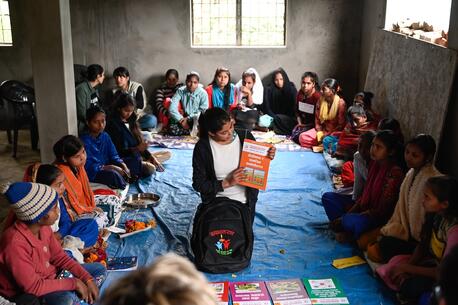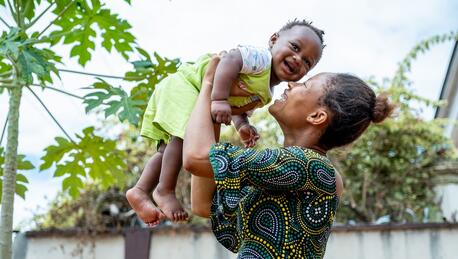Simple strategies can prevent children’s deaths from pneumonia and diarrhea
Over these past few weeks we have been gathering momentum as we continue our work towards the goal to end the deaths of children from preventable causes. One example of the enormous potential we have for saving children’s lives is in the prevention of pneumonia and diarrhea—the two primary killers of children under five. UNICEF recently released a report outlining effective prevention and treatment strategies for both illnesses. Here are some of the strategies UNICEF uses to save lives.
Over these past few weeks we have been gathering momentum as we continue our work towards the goal to end the deaths of children from preventable causes. Many of you posted your photos at age five to raise awareness of the millions of children who don’t reach their fifth birthday, and last week we went to Washington to join world leaders as they made the commitment to end preventable child deaths within a generation.
 One example of the enormous potential we have for saving children’s lives is in the prevention of pneumonia and diarrhea—the two primary killers of children under five. UNICEF recently released a report outlining effective prevention and treatment strategies for both illnesses. I read the report and wanted to share some of the strategies UNICEF uses to save lives:
-Exclusive breastfeeding during the first six months reduces a baby's risk of dying from pneumonia or diarrhea.
-Clean water and sanitation: Most deaths due to diarrhea stem from unsafe water or poor sanitation and hygiene. Hand washing is a simple way to maintain good sanitation and hygiene.
-Vaccinations: Yes, there are vaccines that protect children against the causes of both diarrhea and pneumonia—though they are often not available to children who need them most, or are not yet part of routine vaccination programs.
-Innovations: Mobile technology is being used to communicate with remote communities, and eases data collection and logistics for health workers. UNICEF is also developing a new, easy to use tool for health workers to more accurately diagnose pneumonia.
The timely treatment of both diarrhea and pneumonia in children can be simple: For example, bacterial pneumonia is treated with antibiotics, and children who are dehydrated due to diarrhea are given rehydration therapy, like Oral Rehydration Salts.
The UNICEF report makes it clear: By preventing and treating diarrhea and pneumonia we can save up to 2 million children’s lives each year. We have the tools and knowledge available to end these unnecessary deaths—now we need to work to reach all children. Once we do that, we will have made a giant step toward ending the preventable deaths of children.
One example of the enormous potential we have for saving children’s lives is in the prevention of pneumonia and diarrhea—the two primary killers of children under five. UNICEF recently released a report outlining effective prevention and treatment strategies for both illnesses. I read the report and wanted to share some of the strategies UNICEF uses to save lives:
-Exclusive breastfeeding during the first six months reduces a baby's risk of dying from pneumonia or diarrhea.
-Clean water and sanitation: Most deaths due to diarrhea stem from unsafe water or poor sanitation and hygiene. Hand washing is a simple way to maintain good sanitation and hygiene.
-Vaccinations: Yes, there are vaccines that protect children against the causes of both diarrhea and pneumonia—though they are often not available to children who need them most, or are not yet part of routine vaccination programs.
-Innovations: Mobile technology is being used to communicate with remote communities, and eases data collection and logistics for health workers. UNICEF is also developing a new, easy to use tool for health workers to more accurately diagnose pneumonia.
The timely treatment of both diarrhea and pneumonia in children can be simple: For example, bacterial pneumonia is treated with antibiotics, and children who are dehydrated due to diarrhea are given rehydration therapy, like Oral Rehydration Salts.
The UNICEF report makes it clear: By preventing and treating diarrhea and pneumonia we can save up to 2 million children’s lives each year. We have the tools and knowledge available to end these unnecessary deaths—now we need to work to reach all children. Once we do that, we will have made a giant step toward ending the preventable deaths of children.

Jenny, 2, lies in bed with a respiratory infection in the pediatric ward of National Referral Hospital in Honiara, on Guadalcanal Island, Solomon Islands. UNICEF supports the hospital with training and supplies. © UNICEF/NYHQ2006-2556/Giacomo Pirozzi

